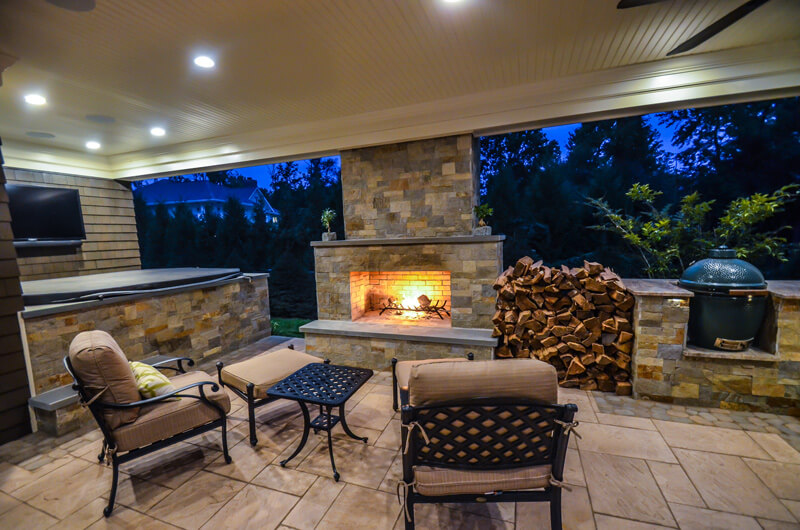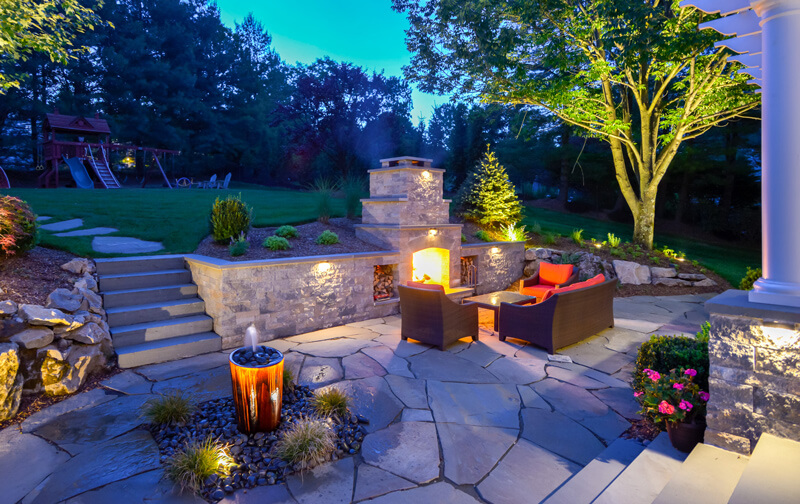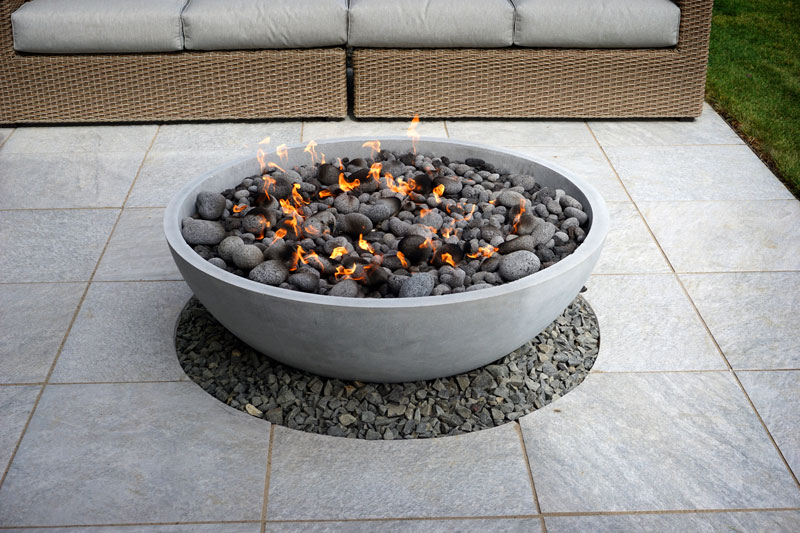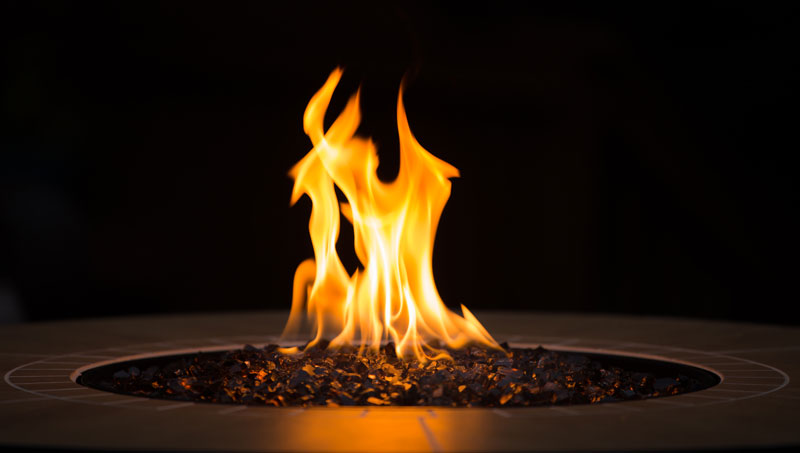Editor’s Note: This blog was originally published on July 29, 2016. It has been updated to include additional information and examples.
For thousands of years people have gathered around the fire. There’s something in all of us that is attracted to the warmth of that orange glow on cool evenings. It’s the relaxing atmosphere that the soft light of outdoor fireplaces or fire pits add to any outdoor setting. In fact, the “American Society of Landscape Architects (ASLA)” has published interesting findings. In the design of outdoor spaces, fire pits or fireplaces are the #1 feature requested by clients.
A custom outdoor fireplace will increase the value of your home and the amount of time you can enjoy the outdoors. Your landscape fire feature will extend the days into the evenings and lengthen the seasons. From the early spring into the fall, you will be able to enjoy every moment of your time outside.
There are many things to consider when designing a fire element in your landscaping layout. Here are a few thoughts and considerations that will help you determine what kind of fire feature is in your future.
What is the Purpose of Your Installation?
Choosing between a fire pit or fireplace is highly dependent on your reason for wanting a fire element in your backyard. If you are looking for a source of heat, a fireplace will be more your style. Fireplaces put off a strong heat in one direction, making it a great installation for quiet contemplation outside, in any weather. But, if you need a space to share with a large group, a fire pit offers more space for entertainment and conversation. While a fire pit doesn’t give off as much heat, the heat is accessible around the entire installation. That leaves the question, are you looking for group fun or a cozy spot with outdoor heat?
The Importance of Safety

A make or break factor between choosing a modern fire pit or fireplace is safety. Ask yourself, who’s going to be around the installation? Do you have children and/or pets? If you do, you may want to install a fireplace. A well-built fireplace is sturdy and covered on multiple sides. This means that a trip-and-fall into the fire is very unlikely. While a fire pit isn’t dangerous, it’s fully open plan puts children and pets at a higher risk.
Finding the Best Location for Your Element of Fire

Your new outdoor fireplace will quickly become the perfect area for friends and family to gather and chat or make s’mores. So, consider the location and space you will need for both the fireplace and comfortable seating. Here are several other considerations to think about:
- Zoning laws or ordinances that must be observed in your township
- Keep fire elements away from structures on your property.
- Consider the view and your privacy from your location options.
Visualize the actual location of the fire element in your yard and its relation to other landscape elements and modes of egress. Think about the fire feature’s proximity to your outdoor kitchen, dining area, patios, pool house or spa.
Zoning requirements can vary from city to city. It is important to be mindful of guidelines when building your fire feature. Zoning restricts how close a fireplace can be built to a home. Some municipalities have rear and sideline setback restrictions. These guidelines can also change depending on whether you are fueling the fire with wood or gas.
Size and Proportions for Outdoor Fireplaces and Fire Pits

Your outdoor fireplace’s size and scale should be suitable for the location you have chosen. Space considerations will often affect the dimensions of your fire element. Consider the ratios of an outdoor fireplace design relative to the size of your yard. If you have limited space, a smaller natural stone fireplace is perfect for an intimate setting. Fire pits can also be more effective in a small to medium area because they take up less room to gather around. In more expansive projects an outdoor fireplace can have extended hearths that seat several people or hold wood. Incorporate other landscape design elements like pergolas, patios, and outdoor dining areas. Use the outdoor fireplace or pit as a key feature in your new outdoor living room.
Materials Options for the Outdoor Fireplace
The materials that can be utilized to create your outdoor fireplace or fire pit include a variety of colors, textures, and finishes. Some options are natural stone, brick, river rock, flagstone, and manufactured masonry products. Consult with your landscape designer about materials that will withstand the elements for many years to come.
Deciding Between a Wood Burning Outdoor Fireplace or Gas Fire Feature

There are a few ways for you to show off your fiery flame. Burning wood logs are one option. Faux logs or stone with a gas flame are other alternatives. You may love the aroma and ambiance of a wood-burning fire but beware of local construction and building code requirements. Some communities prohibit an outdoor fireplace that is going to be “fueled” by wood. Other municipalities regulate burning wood flames near wooded areas. It’s important to consider your property’s prevailing wind direction when planning the location of your fire element. Wood burning fire pits or fireplaces can create a lot of smoke depending on the wood you burn.
Natural or propane gas is somewhat easier to control. It is also considered “cleaner” and requires less ventilation and draft to burn correctly. For many homeowners, the decision between gas and wood-burning outdoor fireplace lighting comes down to town ordinances and the amount of space available to accommodate this luxurious yet family-friendly feature.
Outdoor Landscaping Group
Whether you chose an outdoor fireplace or a fire pit, there are many positive aspects to having a fire element in your landscape. Enjoy extended seasons of outdoor time, a comfortable and relaxing place to entertain and an increase in your property’s value!
Contact us today if you’re thinking of adding a fire feature landscape installation and we’ll provide landscape design ideas that are perfectly suited to your property.

